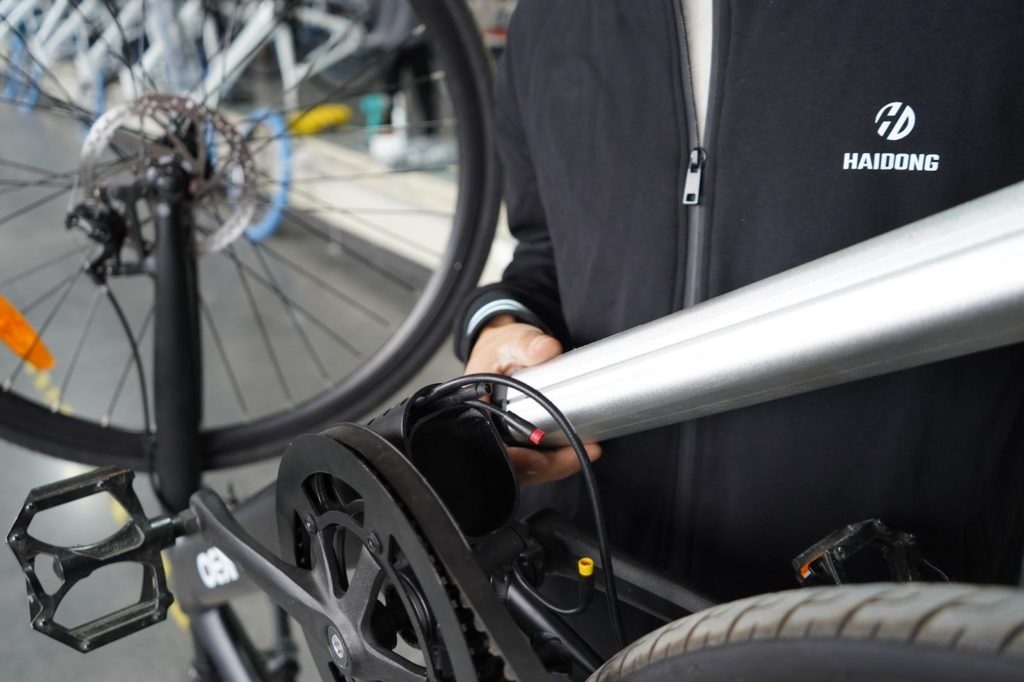On an electric bike, how long should the first charge of the battery last? How many times can I carry it? How many hours do I leave charging? When should I change it? The battery is a fundamental part of technology, but it is still surrounded by many doubts, myths and misconceptions. After all, an electric bike manufacturer must have made sure that its products don’t have a “troublesome” battery.
To help demystify your electric bike’s battery, today’s post clarifies the main questions about the topic. Follow up!
Electric bike: battery autonomy
Working as the heart of the skinny one, it is the battery that will provide the energy needed for the electric motor to work and for you to be able to count on the boost that only a motorized bicycle offers.
What determines the battery life is the amperage – the higher it is, the longer its autonomy. Regarding distance, with a battery charge it is possible to travel from 30 to 60 km, depending on the model and type of bike, in addition to the conditions of use. The basic and intermediate models have a 250h W motor and the others are 350 W.
A nice tip wen choosing your e-bike model is to take into account the autonomy required for your daily journeys, such as commuting to and from work, in addition to intermediate displacements. A few years ago it was common to give a longer charge to ebike batteries before their first use. But this is unnecessary! You just need to charge the battery until the gauge shows full charge, nothing more.
In some cases, the battery does not arrive discharged for the customer and the recommendation is to carry out a normal charge cycle, which is to connect the charger to the socket and to the battery, check that the indicator light will turn red and wait for the indication to change to green.
Recharge time
Battery charging is via a single outlet, at 110 or 220V, and charging is relatively quick: in general, it takes 3 to 5 hours to complete. A common question is whether we can leave it charging for long periods, such as an entire night, or whether we can let it discharge completely. There are no restrictions on zeroing and charging after completion, as it has controllers that manage the life of its cells, not letting it run out or even overload.
Load running out
The battery has an internal electronic charge management system that does not allow it to completely discharge, as this would damage it. Thus, at a safe voltage for the battery, the system turns it off to maintain the life of the internal cells. That’s why we can use the entire load without worry.
100% loading
There is no technical problem or risk in leaving the charger and battery connected, but there is a small waste of electrical energy. During recharging, the charger monitors the charge and, when it detects that it is complete, it stops feeding the battery – also indicating with the green light that the cycle is complete.
Battery life
The battery has a life cycle that is directly related to the number of recharges made and also its natural aging, which occurs regardless of use.

Portability
Coming to work and finding that the battery needs a charge? The lithium battery is easy to remove from the bike, allowing you to leave the e-bike parked and take just the battery to recharge. It is essential to remember that, as with any electrical equipment, charging must be done in a clean, dry place, and protected from the sun.
Weight
Lithium is the lightest of the metals used in batteries and provides the highest energy density by weight. Commonly, lithium batteries like the ones used by ebike manufacturers like Haidong Bike, range from 2kg to 3kg, which ensures lighter and easier time riding the skinny.
Self-discharge
If you don’t ride your e-bike that often, it’s important to know that even when you don’t use it, the battery loses a little bit of charge. So, when you use it, make sure it’s loaded. If it is not going to be used for a long period, we recommend that it be stored away from the sun and rain, and that a full charge cycle is carried out at most every 3 months.
Was this post useful? We hope so!






